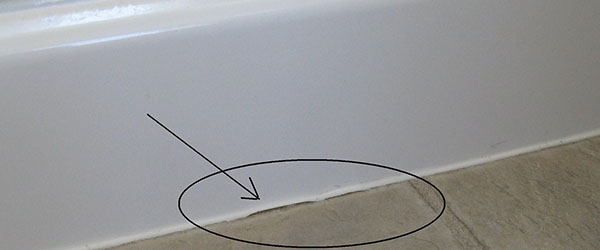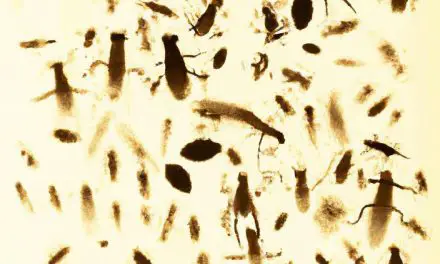This post may contain affiliate links.
Cockroaches are notorious creatures that have fascinated and repelled humans for centuries. These insects have existed for quite some time, with their ancestors, known as “roachoids,” dating back to the Carboniferous period, approximately 320 million years ago. As you dive into the history of how cockroaches got their name, you will find the connection between their English name and its derivation from the Spanish language.
The etymology of the word “cockroach” provides an intriguing insight into their fascinating background. Derived from the Spanish word “Cucaracha,” the name “cockroach” found its way into the English lexicon in the 17th century. The Spanish term, which translates to “little beetle” or “little devil,” aptly captures both the physical attributes and the their infamous reputation. In history, the word “cockroach” encompassed several insects like beetles and woodlice, and of course – the cockroach we know of today.
The name “cockroach” has a long and fascinating history. Its etymology is rooted in language adaptations and cultural influences. The English term “cockroach” is derived from the Spanish word “Cucaracha,” which was adapted into English in the 17th century. This unique name has an intriguing past that helps us understand its present usage.
The Cucaracha Influence
“Cucaracha,” the original Spanish term for cockroach, has influenced other languages and scientific classifications as well. The Latin word “blatta,” meaning an insect that shines the light, ultimately gave us the the name order “Blattodea.” Blattodea encompasses not only cockroaches but also termites, another type of insect that prefers living in dark spaces. Additionally, the word translated as either “little beetle” or “little devil,” offering insight into the negative perceptions surrounding these pests.
Common Slang and Modern Usage: Evolution of the Word
In technical terms, cockroaches are also known as “blattodea,” which is their scientific classification. The term “cockroach” itself has a rich linguistic history rooted in Old English. The “cock” comes from the old enlgish word “cocc” which meant “bug”. And the name”roach” was just taken from the Spanish word “cucaracha”. After time, if became the single work we know today, Cockroach.
What’s the difference between a cockroach and a roach?
You might have heard the terms “cockroach” and “roach” used interchangeably. In fact, there is no significant difference between the two terms, as “roach” is simply a shortened version of the word “cockroach”. Both terms refer to the same insects that are notorious for infesting homes and buildings.
While the terms “roach” and “cockroach” might be used to refer to the same insects, it’s important to note that there are differences among the various species of cockroaches. Their size, color, and markings can vary, as well as their preferred environments and habits. Some cockroaches are attracted to damp, dark areas, while others prefer warm and dry conditions.
What nationality is the name roach?
The name roach, or more specifically, cockroach, has its roots in the Spanish language. It comes from the Spanish word “cucaracha” is used to refer to these types of insects. The word itself is derived from the Latin word “blatta”, which means an insect that shines the light. This Spanish term was then adapted into English, where it has been known as “cockroach” since the 17th century.
Now that you know the nationality behind the name roach, you may also be interested in the deeper linguistic history. The English name “cockroach” is a combination of “cock” and “roach”. While “cock” represents their roach-like appearance, “roach” stands for their swift and agile movements. Together, these two words came to symbolize the familiar insect we recognize today as a cockroach.
Going back even further, the origin of cockroaches as a species can be traced back to the Carboniferous period, around 320 million years ago. Their ancient group was known as “roachoids” and their evolution led to the modern cockroaches we know today.
The name roach hails from Spanish origins with connections to Latin, and it has been a part of the English language for centuries. This historical context showcases the fascinating background behind the name of this common, yet ancient insect.
Are There Any Other Names For Cockroaches In Different Languages?
Cockroaches are known by various names in different languages. You may find this interesting as it showcases the widespread recognition of these creatures across cultures. Below are a few examples of how the term “cockroach” is translated in various languages:
- Spanish: Cucaracha
- French: Cafard
- German: Kakerlake
- Italian: Scarafaggio
- Russian: Таракан (Tarakan)
- Chinese: 蟑螂 (Zhāngláng)
- Japanese: ゴキブリ (Gokiburi)
- Korean: 바퀴벌레 (Bakwi-beolle)
As you can see, the names for cockroaches in different languages can vary greatly. Some of the translations may even have unique meanings or stories behind them. For instance, the word “cockroach” in English is derived from the Spanish word “cucaracha.” The Latin name “Blatta” is also associated with cockroaches, meaning “an insect that shuns the light.” This is a reference to their preference for dark, secluded places.
What is the nickname for cockroaches?
You might be surprised to learn that cockroaches have a number of nicknames, which vary depending on the country and language. Another well-known nickname for cockroaches comes from Spain. The Spanish word for these insects is “cucaracha,” which translates to “little beetle” or “little devil.” This term dates back to the early 1600s. As English speakers became more familiar with these insects, the name evolved into the word we know today: cockroach.
The name “cockroach” itself has a linguistic history rooted in Old English. The combination of “cock” and “roach” originally referred to their roach-like appearance and swift movements. Over time, the term became more specifically associated with the insects we recognize today as cockroaches.
In summary, nicknames for cockroaches include “blattodea,” a term with Latin origins, and “cucaracha,” a Spanish term that translates to “little beetle” or “little devil.” Regardless of the nickname used, these insects are known for their light-shunning behavior and fascinating linguistic history.
Are German Cockroaches from Germany?
You might find yourself wondering if German cockroaches actually come from Germany. Contrary to their name, this well-known species (Blattella germanica) is not originally from Germany.
German cockroaches are infamous for their fast reproduction rates and adaptability. They can grow from egg to reproductive adult within just 50-60 days in ideal conditions. No other residential cockroach reproduces quite as quickly. In addition to their impressive speed, these cockroaches are known for their excellent ability to adapt to pest control methods.
How Did German Cockroaches Get Their Name?
A Danish entomologist found the species of German roaches and named it B. livida. He sent a bunch of them to a collegue in Sweden. This is when Carl Linnaes decided to change the name to Germanica back in 1767. It eventually evolved into the name for today – the German cockroach.
Are There Any Idioms Or Expressions Related To Cockroaches In Different Languages?
Cockroaches are fascinating creatures, and they have made their way into the idioms and expressions of various languages around the world.
In English, there is the expression “like a cockroach” which is used to describe someone or something that is hard to get rid of, or that survives in difficult conditions. This phrase is derived from the infamous resiliency and persistence of cockroaches, which are known to withstand harsh environments and are difficult to eradicate.
In Spanish, the word for cockroach is “cucaracha”, and it is used in a popular folk song called “La Cucaracha”. It’s a catchy tune that tells a story using the cockroach as a metaphor for a variety of social and political issues.
In French, there’s a phrase “avoir des cafards”, which literally translates to “to have cockroaches.” However, its figurative meaning is to feel down or to have the blues. This connection between cockroaches and sadness may relate to the pests’ negative reputation and the discomfort they can cause in a home.
In Indonesian, there is an expression “kecoa mati di dalam gulungan karpet”, which translates to “a dead cockroach inside a rolled-up carpet.” This idiom is used to describe a situation where a problem remains hidden or goes unresolved.
These examples demonstrate that cockroaches have inspired idiomatic expressions in different languages across the globe. By understanding these phrases, you can gain insight into how cultures perceive and interact with these resilient insects.
Frequently Asked Questions
What factors contributed to the naming of cockroaches?
The name “cockroach” is believed to have originated from the Spanish word “cucaracha,” which translates to “little beetle” or “little devil.” This naming was likely influenced by the insect’s remarkable ability to survive in even the most extreme conditions. Additionally, the Latin name for cockroach, “Blatta,” means “an insect that shuns the light,” which reflects their behavior of avoiding light and their preference for dark environments.
Are there any unique features that inspired the cockroach name?
Cockroaches are known for their resilience and adaptability, which may have played a role in inspiring their name. Their ability to survive in harsh environments, often where other creatures cannot, could have been a factor in being called “little devils.” Furthermore, their tendency to avoid light and thrive in darkness might have contributed to their Latin name, “Blatta,” and ultimately, their English name, “cockroach.”










